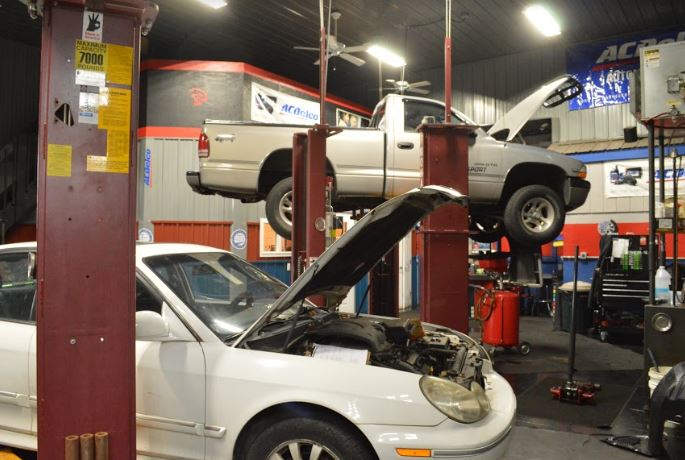All Categories
Featured

Keeping your lorry's tires is important to make sure a smooth, risk-free, and efficient driving experience. Two essential solutions that are typically overlooked yet have a substantial effect on tire long life and efficiency are tire turning and placement. These solutions help maintain your automobile running effectively and prevent unequal tire wear that can affect both safety and gas economy. Allow's study what tire rotation and positioning are and why they are essential for your cars and truck.
What Is Tire Turning? Tire turning is the procedure of relocating your tires from one position to one more to ensure they use uniformly. Because your auto's tires work at different prices depending on their position (front tires versus back tires), rotating them consistently aids to distribute the wear uniformly, leading to a much longer lifespan for your tires.
Tires on the front axle have a tendency to put on quicker than those on the rear axle, particularly in front-wheel-drive autos, where the front tires handle both steering and power. On the various other hand, back tires could put on unevenly depending upon the vehicle's weight distribution and driving problems. By revolving your tires every 6,000 to 8,000 miles (or as suggested by the manufacturer), you'll guarantee an extra well balanced wear pattern.
What Is Tire Placement? Tire alignment, likewise referred to as wheel placement, refers to changing the angles of your vehicle's wheels to the producer's specifications. Proper alignment makes sure that your tires are pointing in the right direction, and it assists make best use of tire life and improve vehicle handling. There are three primary aspects of alignment: camber, caster, and toe.
Camber refers to the tilt of the tires from the front of the automobile. If your tires are tilted excessive internal or exterior, it can cause uneven wear. Caster describes the angle of the steering axis when checked out from the side of the vehicle. This impacts the stability of the guiding, specifically when driving right. Toe describes the angle at which the tires direct internal or outward when watched from above. This affects just how your automobile tracks when traveling. An appropriate placement ensures that all four tires are pointing right ahead and are tilted properly. Misalignment can arise from hitting craters, aesthetics, or merely from the wear of suspension components in time.
Why Tire Turning and Alignment Issue. Extended Tire Life. Both tire turning and placement assistance avoid unequal tire wear. When your tires use equally, they last longer, which can conserve you money in the future by reducing the need for early replacements.
Improved Security. Correct tire rotation and alignment boost vehicle stability and handling. Misaligned tires or unevenly used tires can adversely affect your capacity to guide and stop your vehicle, especially in emergency situation circumstances. Routine upkeep guarantees your tires carry out optimally, giving a more secure driving experience.
Much Better Gas Efficiency. If your tires are not straightened correctly, they may drag against the road surface area, triggering resistance. This additional rubbing can lower fuel efficiency, causing your automobile to take in more gas. Normal tire alignment ensures that your vehicle relocates efficiently, enhancing gas mileage.
Enhanced Convenience. Imbalance or erratically worn tires can result in a rougher adventure, as your car might draw to one side or create resonances. By keeping your tires rotated and aligned, you'll take pleasure in a smoother and much more comfy driving experience.
Indications That Your Tires Need Turning or Alignment. It's vital to remain alert for any type of signs that your tires need turning or alignment. Look out for these common indicators:
Uneven Tire Use: If you notice that one tire is dramatically more used than the others, it may be time for a rotation or placement. Steering Pull: If your automobile pulls away while driving right, this might show imbalance. Vibrations: If you feel resonances in the guiding wheel or the vehicle itself, it could be a sign of imbalance or uneven tire wear. Squealing Tires: Uncommon tire sound can additionally suggest inappropriate placement or the requirement for a tire rotation. Just how Usually Should You Revolve and Straighten Your Tires? Tire turning should typically be done every 6,000 to 8,000 miles or as specified in your vehicle's proprietor's manual. It's an excellent concept to rotate your tires throughout every oil modification, as this will certainly help you remain on top of normal maintenance.
As for positioning, it doesn't call for as constant service. Normally, alignment should be examined a minimum of once a year or whenever you notice concerns like pulling to one side or resonance. You may likewise require placement if you have actually struck a large pit or curb, which can toss your wheels out of positioning.
Verdict: Maintain Your Tires in Leading Forming. Tire turning and alignment are important services that keep your vehicle running smoothly, safely, and efficiently. By putting in the time to have your tires turned and lined up consistently, you're spending in your car's performance and longevity, while also boosting your security when traveling. Remain positive with tire maintenance, and your vehicle will thank you with much better fuel economy, boosted handling, and extended tire life.
Latest Posts
Unlock Exclusive Discounts with WyHy's Love My Debt Union Rewards
NAPA AutoCare: Reliable Repairs Backed by the NAPA Brand
Raise Your Home with Specialist Siding Solutions